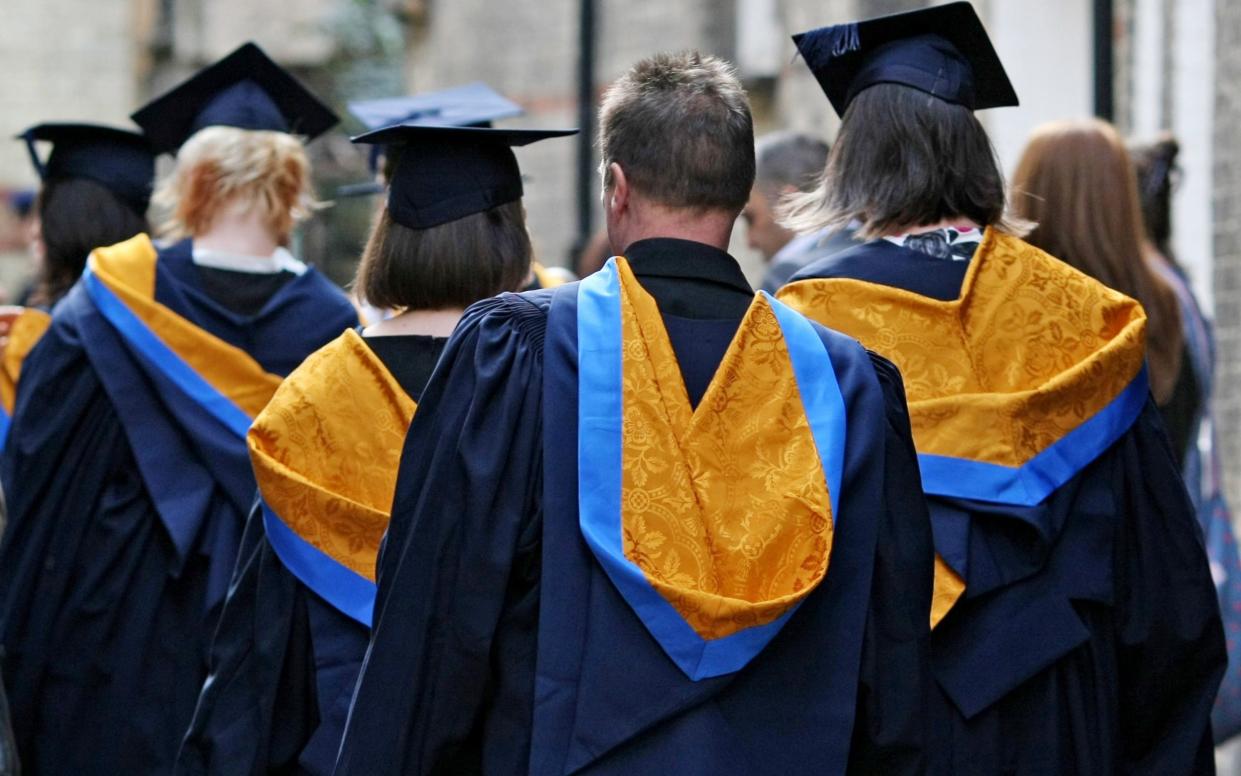Taxpayers ‘ripped off’ as millions of student loans may never be paid back

Taxpayers risk being “ripped off” as figures suggest millions of graduates will never pay back their student loans.
More than 2.5 million former university students saw their debt to the Students Loan Company (SLC) increase last year – despite working and making payments to reduce their balance.
The payments to the SLC of 2,637,640 former students were last year more than swallowed up by the interest they were charged on their loan balance. Last year the average interest charged to this cohort of former students was £2,610, meaning they had to repay almost £220 every month to just keep their loan account static.
The disclosure by the SLC, made under Freedom of Information Act laws, highlights the fact that it is expected many thousands of former students will never get close to paying off their loan.
Christopher McGovern, Chairman of the Campaign for Real Education, said: “Student debt is a runaway train. It is damaging the economy and ruining young lives.
“Taxpayers are being ripped off. We need to convert half of our universities to polytechnics, offering courses that fill the skills gap in our country and provide young people with a good salary; enough to pay off any loans. A start can be made by getting rid of Micky Mouse degrees.”
Student debt is typically written off after 30 years and it is feared the government will lose billions because graduates who do not find high-paying work will not make enough to pay off their loan balance in time. Under new “plan 5” loans, debts are written off after 40 years.
Separate figures from the SLC show there are now 52,661 former university students with a loan balance of more than £100,000, with 19 sitting on a debt of more than £200,000.
The latest figures show how rapidly the number of former students with rising loan balances is increasing; just a year ago there were just 19,239 students with a balance over £50,000 and nobody had a loan over £200,000.
Another 1.7 million people who have left university have a debt to the SLC of between £50,000 and £100,000. A year earlier the number with a loan this size was just 1.3million.
The complex system of student loan debts saw the interest rate charged to students last year vary between 5pc and 7.7pc, depending on what type of loan they originally had.
But at the lower rate it means a former student with a £50,000 debt saw their balance rise by £210 per month, while those with a £100,000 loan saw it increase by almost £420-per-month.
Currently the biggest outstanding debt to the SLC is a balance of £221,277, which could be increasing by around £900 every month.
The majority of the people with the biggest loans of more than £200,000 have been funded through second degrees, with many of them switching to nursing from an unrelated subject.
Graduates are only asked to pay back the loan with payments set at 9pc of anything they earn above the annual salary threshold, which at the moment has been set at £27,295.
All students currently have to pay £9,250 per year for their tuition fees, which is automatically added to their student loan.
In addition, their loan balance is increased by the amount they are given for living expenses, which can be as much as £13,000 depending on how much their parents earn and where in the country they are studying.
It means a typical graduate doing a three-year course will now leave university with a loan balance of between £40,000 and £60,000.
The current system means that somebody with an outstanding student loan debt of £50,000 will need to be earning around £55,000-per-year just to keep their balance stable.
Ben Waltmann, a Senior Research Economist at the Institute for Fiscal Studies, said: “Interest rates on student loans have recently been very high.
“Those who started university between 2012 and 2022 are currently charged interest at a rate of 7.8pc per year. These high interest rates are due to a combination of high inflation and high interest rates in the rest of the economy.
“As inflation has come down, student loan interest rates will soon fall. From September, 2012 to 2022 starters will likely be charged between 4.3pc and 7.3pc in interest, depending on their earnings.
A Department for Education spokesperson said: “It’s vital we have a sustainable student finance system that is fair to students and taxpayers.
“New borrowers will not repay more than they originally borrowed when adjusted for inflation, and graduates who earn less than the repayment threshold will not have to make any repayments. Any outstanding debt will be written off at the end of the loan term.”



